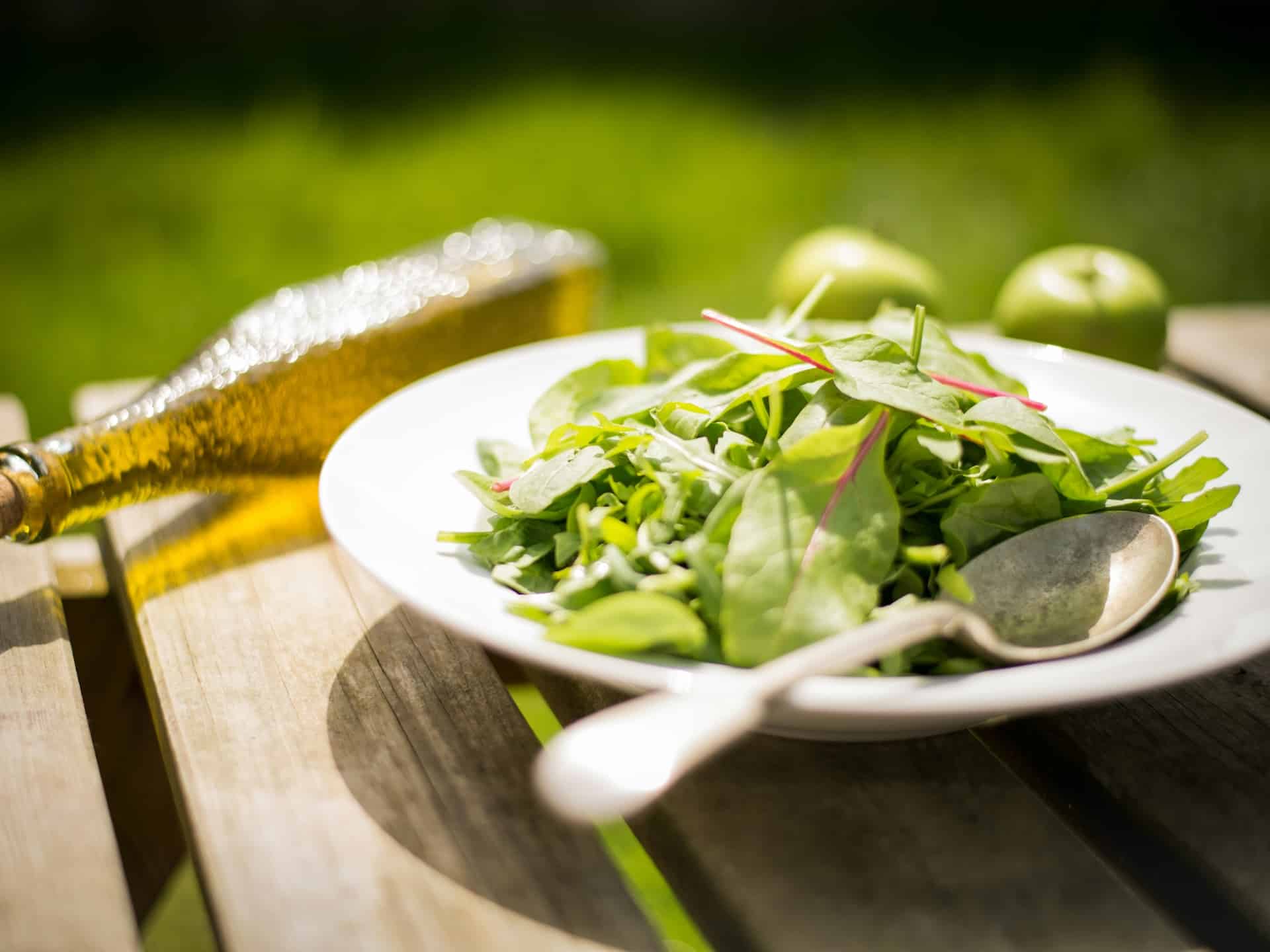
Heat, a sedentary lifestyle, hormonal changes or the abuse of foods loaded with salt predispose to the appearance of edema, which is how it is called in medical jargon. fluid accumulation in the tissues. That is, the dreaded fluid retention. By changing some habits, it can improve and even disappear, depending on the cause.
The symptoms of fluid retention are easy to recognise: rounded ankles, a ring that strangles the finger or swollen legs with a feeling of heaviness. Resolving edema is not complicated for healthy people: drink water, eat fruit and vegetables, reduce salt intake, use simple cooking methods, exercise, massage the affected area and some old tricks, such as elevating the legs.
In this article we will delve into the causes and remedies for fluid retention and how to distinguish it from bloating due to gas.
What is fluid retention?
“It is an accumulation of fluids in the interstitial space, which is the space between cells. It is seen, above all, in the legs,” explains Noemí Esteller, a dietician-nutritionist and graduate in Biology and Food Technology. Some people are more prone than others to retain fluids and, although it can happen at any time of the year, it is more common with the arrival of high temperatures. “In summer we see more cases due to the vasodilation due to heat. This situation allows more fluid to escape from the inside of the blood vessels into the interstitial space. As a result, circulation will not work properly,» explains the expert, a member of the Spanish Academy of Nutrition and Dietetics.
Common causes of fluid retention.
Depending on the causes, there are two types of edema. The first is associated with pathologies. The second is multifactorial.
Fluid retention due to pathology
It can be caused by a heart, kidney or blood circulation pathology. «In this case, you should always consult a doctor,» says the expert.
Retention or secondary edema
This is the most common form of fluid retention and is not related to any pathology. It is usually related to the onset of menstruation or menopause, to hot weather, or to spending a lot of time standing without moving (what is known as prolonged standing).
This secondary edema occurs due to multifactorial causes: the hours we spend without moving, the exercise we do, if we have rested well, the diet… «There are foods that contribute to this retention to a lesser extent. Others, on the contrary, will aggravate it. The first thing we recommend to dieticians-nutritionists is reduce consumption of salt“, explains Esteller.
In this case, it is not just about reducing the salt we add to the food we cook at home. “There are many processed foods with a high salt content, such as sausages and cold cuts, bagged snacks, many preserves, fast food and, in general, pre-cooked foods. For this reason, what dieticians-nutritionists advise is to reduce the consumption of high salt processed foodsincrease the consumption of fresh and minimally processed foods, and remove the salt shaker from the table.”
The processed foods mentioned above, in addition to salt, are usually high in energy and fat, which is why their consumption is associated with many health problems.
Female Physiology: Do Women Tend to Retain More Fluids?
Many women notice more fluid retention in the days leading up to and during menstruation. «It usually decreases 2-3 days after the start and can increase again when ovulation occurs,» explains the expert. She also highlights the bad luck caused by the drop in estrogen«With the onset of menopause, the problem of retention often worsens, as hormonal fluctuations are greater. For some women, it is almost impossible to get rid of it.»
In the case of men, the factor of hormonal variability disappears. For this same reason, those who retain fluids will suffer from edema almost constantly.In men, the usual causes are a sedentary lifestyle and diet.”, says the dietician-nutritionist.
Differences between fluid retention, gas and weight gain.
Fluid retention is often confused with abdominal swelling due to gas. Noemí Esteller explains the difference: “Gas build-up causes swelling in the abdomen, but not due to fluid, but because gas has built up in the intestine and is exerting pressure that causes distension.”
On the other hand, it is also common to link fluid retention with weight gain. In this second case, body volume, that is, height, is mainly determined by the amount of fat. «The Fluid retention can cause 1-1.5 extra kilogramsbut not much more. The sensation it produces is of being more or less swollen, but within the same volume.”
Main symptoms and where they are most noticeable
Fluid retention is noticeable in the legs, mainly knees and ankles“It can also be seen in the hands and eyes, especially in the area of the lower eyelid where dark circles and/or bags form,” says the expert.

Tips to avoid fluid retention
Paradoxically, to avoid retention you have to Stay well hydrated. We achieve this not only by drinking water, but also by providing sufficient fluids from the diet, for example, with the abundant consumption of fresh fruits and vegetablesThe amount of water needed will depend on the outside temperatures and the level of physical activity of each person. “Nature is wise. If the body senses that you are giving it water, it will retain less liquid,” warns Esteller.
Especially when the heat is on, he suggests adding to the regular menu foods with a high percentage of water in their composition. “Summer gives us the food we need. Summer fruits, such as watermelon, melon, tomatoes, nectarines, plums… are rich in water and can help avoid water retention.”
The same goes for seasonal vegetables. Therefore, a tasty homemade solution to the crunchiness is to indulge in refreshing dishes, such as salads, gazpacho, cold vegetable creams, etc. In all these cases, it is best to season with aromatic herbs or spices, a good olive oil and, again, limit added salt.
Natural treatments and remedies to reduce inflammation
In addition to reducing the consumption of added salt and processed foods that provide high amounts of it, there are other tricks or home methods that help us reduce fluid retention:
- Cold water showers on the legs.
- Bathing in fresh water (beach, river, pool…)
- Compressive media
- Sit with your legs up
- Sleep with your legs slightly elevated, with a pillow under your feet.
- Physical activity
- Draining massages to promote circulation
The expert reminds us that «in general, everything that promotes good circulation will help. For this reason, the main treatment to avoid retention in a healthy person is do exercise. Not moving causes this circulation to become difficult when there is a predisposition due to other factors already mentioned,” says the dietician-nutritionist. Moderate physical activity is one of the most effective tools to relieve fluid retention.
Draining massages also help, as they facilitate the movement of accumulated fluid. However, a draining massage only does that, draining, it will not stop the tendency to retain fluids. “They must be combined with a healthy diet and an active lifestyle. For example, reducing a sedentary lifestyle, avoiding toxins such as alcohol or tobacco, and resorting to a diet rich in fresh foods, prepared in simple ways.”
When to see a doctor
Noemí Esteller advises going to the doctor “when edema is accompanied by fatigue with minimal effort. Also, when it causes pain, especially in the ankles and legs.”
Is there any difference between them? Edema and lipedemaIf you suffer from the latter, there may be an underlying pathology that should be evaluated by the doctor. To detect it intuitively, you have to press on the inflamed area. “If a mark remains on the skin for a few seconds, which is known as a pit, we are dealing with edema or fluid accumulation in that area. If this mark does not remain, it is probably lipedema, a symmetrical accumulation of fat that gives the appearance of having swollen legs, even to the point where the ankle, knee and thigh cannot be distinguished.”
Lipedema is a more serious problem, generally related to hormonal changes, which will require a multidisciplinary approach.
The ALDI Council
Have you heard of the Pomodoro method? It consists of taking short breaks every 25 minutes at work. Use this break to move around (take a walk around the office or do some stretching). In addition to helping you clear your head, you contribute to reducing fluid retention due to poor circulation caused by spending a lot of time sitting.

Noemi Esteller. She has a degree in Biology and Food Science and Technology, and also a degree in Human Nutrition and Dietetics and a Master’s degree in Dietetics and Dietotherapy, all from the University of Valencia. She is a member of the Spanish Academy of Nutrition and Dietetics and since 2005 she has worked as a self-employed dietician-nutritionist at the Clínica Nutricional NE in Sagunto. She has taken various specialization courses in Digestive Pathologies, Expert in Inflammation and Autoimmunity, Specialization in Veganism, lacto-ovo vegetarianism, among others. She is a scientific disseminator in nutrition from the «Nutrition Bites» section for the Sagunto City Council. She also gives talks in schools and institutes on various topics with the common axis of healthy eating. TWITTER: @noemiesteller. FACEBOOK: @centronutricion and @noemiesteller INSTAGRAM: @noemiesteller and @clinicanutricional_ne.








Telif hakkı ihlali Google SEO ile web sitemizin görünürlüğü ve erişilebilirliği arttı. https://www.royalelektrik.com/asagi-dudullu-elektrikci/
Appreciate the content you put out!